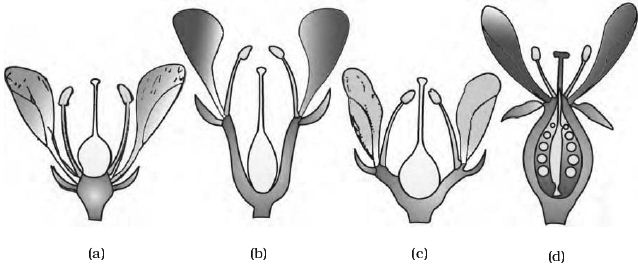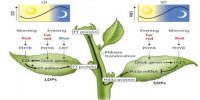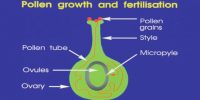The flower is the reproductive unit in the angiosperms. It is meant for sexual reproduction. A typical flower has four different kinds of whorls arranged successively on the swollen end of the stalk or pedicel, called thalamus or receptacle.
These are calyx, corolla, androecium and gynoecium. Calyx and corolla are accessory organs, while androecium and gynoecium are reproductive organs. In some flowers like lily, the calyx and corolla are not distinct and are termed as perianth. When a flower has both androecium and gynoecium, it is bisexual. A flower having either only stamens or only carpels is unisexual.
In symmetry, the flower may be actinomorphic (radial symmetry) or zygomorphic (bilateral symmetry). When a flower can be divided into two equal radial halves in any radial plane passing through the centre, it is said to be actinomorphic, e.g., mustard, datum, chilli. When it can be divided into two similar halves only in one particular vertical plane, it is zygomorphic, e.g. pea, Gulmohur, bean, Cassia. A flower is asymmetric (irregular) if it cannot be divided into two similar halves by any vertical plane passing through the centre, as in canna.
A flower may be trimerous, tetramerous or pentamerous when the floral appendages are in multiple of 3, 4 or 5, respectively. Flowers with bracts, reduced leaf found at the base of the pedicel, are called bracteate and those without bracts, ebracteate.

Figure: Position of floral parts on thalamus: (a) Hypogynous (b) and (c) Perigynous (d) Eplgynous
Based on the position of calyx, corolla and andivecium in respect of the ovary on thalamus, the flowers are described as hypogynous perigynous and epigynous (Figure). In the hypogynous flower the gynoecium occupies the highest position while the other parts are situated below It. The ovary in such flowers is said to be superior, e.g. mustard, china rose and brinjal.
If gynoecium is situated in the centre and other parts of the flower are located on the rim of the thalamus almost at the same level, it is called perigynous. The ovary here is said to be half inferior, e.g. plum, rose, peach. In epigynous flowers, the margin of thalamus grows upward enclosing the ovary completely and getting fused with it, the other parts of flower arise above the ovary. Hence, the ovary is said to be inferior as in flowers of guava and cucumber, and the ray florets of sunflower.














